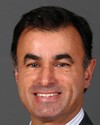Mr. Speaker, it is a pleasure today to set the record straight for the member across the way who knows full well what has taken place with respect to our procurement and our objectives to meet the needs of the men and women who serve so nobly and bravely for our country.
Let me first state a number of our key priorities. The first is to ensure our armed forces personnel get the material they need when they need it. The second is that it is affordable to the taxpayer and that the taxpayer receives good value for the money that they have entrusted us to spend wisely on their behalf.
The defence policy statement clearly states our objectives in these areas. I am glad the member mentioned the helicopter issue and heavy lift capabilities that we are trying to acquire. It is part of a much larger package of fixed wing heavy lift capabilities we are trying to pursue. This is under the umbrella of the $13 billion we have budgeted over the next five years. It is the largest increase for our military in the last 20 years.
I also remind the member that this year's supplementary estimates include an additional $1.3 billion for our forces, making the total for this year $1.8 billion. Where is it going? It is going toward equipment, maintenance, operations, training, care and wages for our service personnel. That is responsible spending of the taxpayer money.
With respect to the fixed wing and procurement, our objective is to have a procurement process that is transparent. We would like to ensure that it is clearly done in an open way. Does it mean that at times we will not go to go to sole source? No. At times we will and we will do it when it makes sense to do it under the guiding principle that our forces get the equipment when they need it.
Will we pursue an open bidding process when, as a matter of principle, we know only one particular piece of equipment is required by our forces? No. We also will try to ensure that the equipment we buy will be either purchased or made in Canada, but not always. Again, getting back to the fundamental principles of ensuring that our armed forces receive the equipment they need when they need it.
This is a much larger part of our plan as articulated in the international policy statement. We are making the investments not only in equipment, but also in training, personnel and care for our armed forces personnel.
I encourage all those people who are watching tonight to take a look at our international policy statement. I encourage them to look at the defence capabilities and at our plans for the future. We encourage people to give us input into how we can make that better. However, we have turned a corner. It is not the end. It is a down payment in the future of our forces and our ability to move forward with the goals and objectives that we want to pursue for our country and Canadians.

